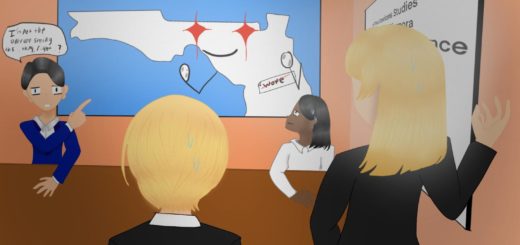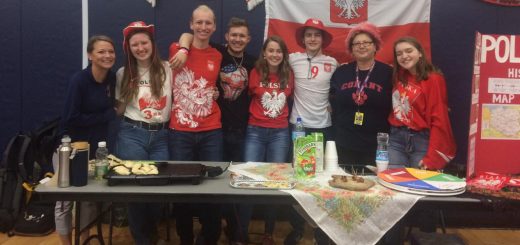The Black Student Alliance shares the purpose behind Black History Month decorations
In honor of Black History Month, the Black Student Alliance (BSA) has been sharing their voice to pay tribute to important Black figures in American history. Throughout the beginning of February, the club’s members came on morning announcements to talk about the origins of Black History Month, their favorite influential Black figures, and the continued adversity that Black Americans face today.
The club has also been working since November to create the Black History Month decorations displayed in the main hallway for the month of February. “The decorations don’t really follow a theme,” Damiyah Wells, ‘23, said. “We kind of dipped into everyone’s ideas and it all came together.”
The decorations are a continued BSA tradition, and every year they face the same challenge: hoping their classmates will respect the decorations. “Some people don’t really respect [the decorations] or Black History that much at Conant,” Michigan Talon, ‘25, said. “We always hear people making disrespectful jokes that are normalized way too much.”
The club agrees that as a minority population at Conant, a struggle among Black students is relating to their peers and teachers. A common issue is microaggressions, small slights or insults targeted toward culturally marginalized groups. Microaggressions can be unintentional or intentional, and often enforce a stigma toward a minority group. “We hear it from all kinds of people: our classmates, in the hallway, even from teachers,” Micah Bates, 23’, explained.
“When we hear people tell us things like ‘Why are you so loud?’ or ‘Woah, don’t get too feisty!’, when the same behavior from a white student gets no comment, it enforces a stereotype that Black people are ‘obnoxious’ or ‘aggressive’,” Bates said.
The BSA believes a big contributor to the unease that Black students may have at Conant stems from not having Black role models in the building. “This school needs more black teachers, and more teachers of color in general,” Tamia Fouche, ‘25 said. Fouche explained that she, along with many other Black students, often find themselves trying to prove to their teachers that they are smart and capable.
“Some [teachers] don’t trust that you can be in these higher level classes. Everything is called into doubt about your intellectual capacity, which makes us doubt ourselves a lot,” Fouche said.
Despite the racial difference, many Black students have found mentors in the building. “I’ve been able to let my guard down with some teachers and get comfortable with them,” Wells said. And, while the BSA agrees that the amount of representation that Black students receive at Conant could be improved, they are grateful for the steps Conant has taken to diversify its staff. “Seeing the number of Black hall monitors they have now is great,” said Talon. “It’s a good step toward bringing more Black people into this school.”
The BSA continues to work to create an inclusive environment for their community, and to lift each other up despite some difficulties they may face at school. They also hope to educate their peers about Black culture, and hope that their classmates understand that, “Black History is everyone’s history,” Bates said. “It’s American [history].”




Recent Comments